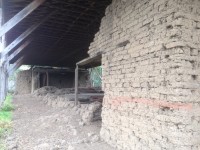I was minding my own business when a friend came up and asked, “If you’re building a building and you find a burial ground, that stops everything, right, or if you find some arrowheads, or if you…” I took a sip from my coffee cup and, realizing the friend had time on their hands, I invited them out for a larger cup. Once we were seated comfortably, I began, slowly at first, but speeding up as I got excited. I made it clear, that before we can discuss the protection and preservation of archaeological sites, we must first address a few acronyms.
I needed to test the waters, to understand how much explanation was required. I asked, “Do you know what an IS is? Have you ever heard of CEQA? Have you heard of the term EIR?” Because I have four male children, I am accustomed to getting blank stares. I knew we needed to order some food as well.
Let’s start with the California Environmental Quality Act or CEQA (see-qua). Passed in 1970, it was developed as a statewide policy to provide California with some level of environmental protection. CEQA requires state and local agencies to follow a protocol to address the environmental impacts of any given project and adopt reasonable measures to mitigate impacts. Today, it is a key element in the planning process, and every local government is required by law to include the tenets of CEQA in their decision making process.
CEQA mandates that an Initial Study (IS) be prepared to determine if the project may have a significant effect on the environment. The IS also identifies measures that will mitigate project impacts to a less than significant level. An IS addresses topics such as Aesthetics, Biology, Traffic, Geology and Cultural Resources (aka archaeological sites and the built-environment). An IS includes a project description, environmental setting, potential impacts and mitigation. An IS will make a determination regarding the need for an EIR.
The primary purpose of an Environmental Impact Report (EIR) is to provide local planners and the public with detailed information regarding a project’s environmental effects and provide ways to minimize significant effects and provides potential alternatives to the project. According to CEQA, when there is “substantial evidence, in light of the whole record, that a project may have a significant effect on the environment,” an EIR will be required.
So, what about the burial ground and arrowheads? With the establishment of CEQA in 1970, developers are required to pay for all environmental documentation and mitigation. While working with local Native Americans regarding Native sites is important, burials, for example, can be removed and reburied elsewhere, allowing for the project to move forward. When archaeologists excavate sites, they are retrieving information important to understanding prehistory.
In general, archaeologists are not concerned about any value a specific artifact may have in the black market or to a museum. Archaeologists are primarily concerned with what artifacts tell us. Research designs are formulated to identify strategies to address questions and solve problems in the archaeological record. Here in Sonoma, one might ask about the degree to which Native Americans assisted in the development of the mission, as well as the physical development of the town in 1835.
Placing a mortar and pestle on a table does not make the item significant. To archaeologists, these items are beautiful in an artistic sort of way, however, more important are questions centered around their function. How did Native Americans use these utilitarian implements and when? We know that they were used to grind acorns and nuts, but recent blood serum studies tell us that living critters were also ground in the mortars. Critters such as fish, lizards and mice.
My friend seemed to comprehend everything. All was right with the world. Then, I saw her eyebrow raise ever so slightly while she asked, “Are developers required by law to work with Native Americans on construction projects?” I looked over to the waitress and asked to see the desert menu.

